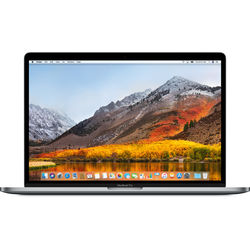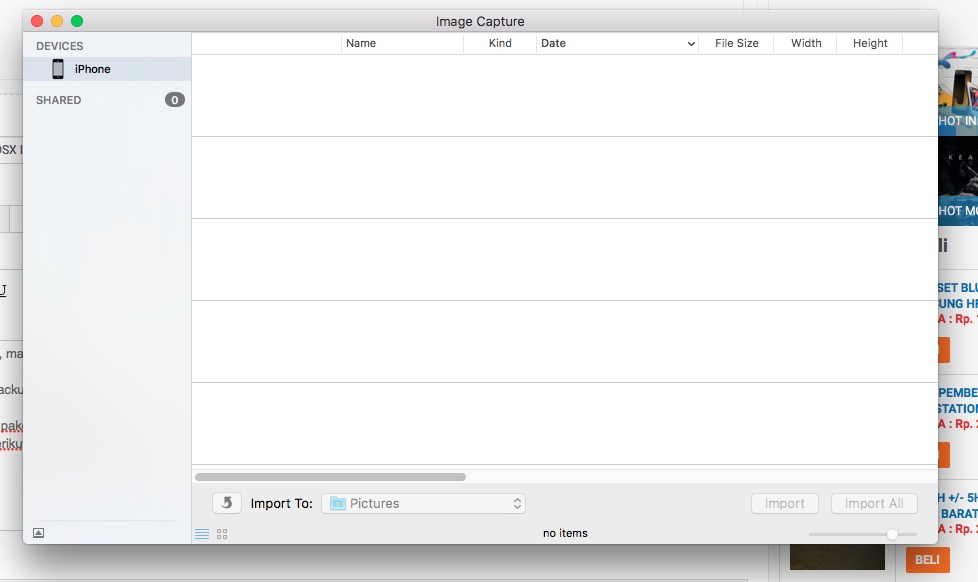Ready Osx Mountain Lion 10.8 (for Mac Series Kaskus Archive
Bila Game / Aplikasi tidak ada di list, bisa di tanyakan kepada kami. Terms & Agreements 1. THarga Softwares untuk 1 DVD Rp.15,000,- dan 1 DVD DL Rp.30.000 2. TWaktu pengiriman paling lama 2 hari setelah konfirmasi pembayaran.
- Ready Osx Mountain Lion 10.8 (for Mac Series Kaskus Archive)
- Ready Osx Mountain Lion 10.8 (for Mac Series Kaskus Archives
- Ready Osx Mountain Lion 10.8 (for Mac Series Kaskus Archives)
THarga belum Termasuk Ongkos Kirim. TSoftwares Dijamin pasti Jalan. TGaransi 3 hari, Lebih dari 3 hari setelah DVD/CD diterima oleh pembeli, garansi tidak berlaku. TGaransi akan kami ganti Source DVD/CD yang sama Persis dengan yg dipesan, Serta Ongkir Ditanggung Pembeli 3.
TBarang yg Rusak dikirim ke kami, dengan keadaan baik dan tidak cacat dan kami akan mengganti barang yg sama dengan segera! TREFUND Dana Jika ada pembelian yg batal hanya melalui BCA & Mandiri saja nga bisa ke Bank Lain!
The Times’s technology columnist, David Pogue, keeps you on top of the industry in his free, weekly e-mail newsletter. There had been rumors swirling that Apple was back-burnering the Mac, but that’s hard to believe after Thursday’s announcement: from now on, Apple will update Mac OS X once a year. It will start this summer with Mac OS X 10.8, code-named Mountain Lion, only a year after the Lion version was released. Now you’ll have to decide once a year whether or not to succumb to paying annually the $30 (or whatever Apple winds up charging) for the privilege of remaining current. The real shocker, though, is that for the first time, Apple decided to give tech reviewers an early, early version of Mountain Lion — not just months before its release to the public, but even before its release to its developer (programmer) community.

Ready Osx Mountain Lion 10.8 (for Mac Series Kaskus Archive)
When Lion came along last summer, the big changes were all about making the Mac more like an iPad. Trackpad gestures simulated the multitouch gestures on an iPad screen. Lion features like Full Screen mode, Auto Save and Launchpad are total iPad rip-offs, too; if Apple hadn’t stolen these features from itself, it would surely be suing for copyright infringement. Well, don’t look now, but Mountain Lion brings even more of the iPhone/iPad features to the Mac. The juiciest payoff here is the suite of Mac apps that now mimic what’s on the iPhone/iPad, like Reminders, Notes, Messages and Game Center.
Through your free iCloud account, all of these apps are synced instantly and smoothly across all your Apple gadgets. On the Mac, you type a reminder to yourself; it appears simultaneously on your iPhone. Notes is cool: you can add photos to your notes, or change the font styles and sizes.
(The font and size changes sync over to your iPhone/iPad, but not photos.) You can also pin a note to your desktop to make sure it grabs your attention. Messages is particularly awesome. Now you can type little messages — or shoot photos or videos — to anyone else with an iPhone, iPad, iPod Touch or Mountain Lion Mac, right from your computer. These may feel like text messages, but they’re free and don’t involve the cellphone company. And because everything is synced up, you see the same conversation thread on all your gadgets.
If you started a chat with your boss on the phone, you can get home from work, sit down at your Mac and see the whole transcript so far. This new Messages app replaces the venerable iChat.
Ready Osx Mountain Lion 10.8 (for Mac Series Kaskus Archives

Or, actually, adds onto it; all the old iChat features are still there. And you can download an early version of this app Twitter is now built into many Mac programs, like Safari, iPhoto, Photo Booth, and Quick Look, so you can tweet almost anything. A Share button is built into many Mac apps now, too.
For example, in the Safari Web browser, you can click it to share a Web page via Mail, Messages or Twitter. In Notes, the Share button offers to send a note by Mail or Messages. In Preview, the button offers Mail, Messages, Twitter, Flickr or AirDrop (the effortless Mac-to-Mac file sharing feature). My favorite new feature, though, is the Notifications Center. It’s that handsome dark-gray list of everything that has been trying to get your attention: incoming e-mail, Messages, alerts and reminders. On the iPhone, you summon this list by dragging your finger down from the top of the screen.
On the Mac, you’ll swipe two fingers from the right edge of the trackpad into the center. (You can also click a special button on the menu bar.) When you do that, the Notifications Center slides onto the screen from the right, shifting the rest of the desktop to the left. It’s gorgeous and Apple-like.
- Detroit Chop Shop line of Sony Sound Series: Sound Effects library titles. System requirements - Mac OS X 10.7 (Lion), 10.8 (Mountain Lion) or 10.9 (Mavericks). Up those clips – BulletProof hands you the perfect edit-ready shots. A large.zip archive without waiting for the entire archive to download.
- Xcode 3.2.x compatibility (Mac OS X 10.6) FPC 2.6.0: there is an issue when compiling dynamic libraries with FPC under Mac OS X 10.6 due to a bug in the Xcode 3.2.x linker. This bug has been fixed in Xcode 4.
After that it stuck and I have no Idea why, according to the owner it was possible to build on a Lion (Mac OSX 10.7.x). Thank you for any help! Ffmpeg osx-mountain-lion cross-compiling android-ndk-r5.
As on the phone, programs that want your attention can display either a banner (it appears for a few seconds at the upper-right corner of your screen, then disappears) or an alert box (which requires a click on a Close button, or a Show button to jump to the program that is waving its hand). You can specify which type you want (or none at all) on a per-program basis. Already, Calendar, Safari, Reminders, Messages, Mail, App Store, Software Update, Facetime and Game Center can display these notifications, and developers can tap into the Notification Center in their own apps. And how do you avoid being bombarded by alerts for every single incoming e-mail all day? A new feature lets you flag certain people as V.I.P.’s — you click a little star icon in the new Mail app next to their names. Only messages from V.I.P.’s try to catch your eye in the Notification Center.
There are lots of other little changes (over 100, Apple says). A few highlights:.
Ready Osx Mountain Lion 10.8 (for Mac Series Kaskus Archives)
The Game Center, a central hub for pairing up anonymous players of games across the Internet, now comes to the Mac, too. Apple says that 100 million people have signed up for Game Center on the iPhone/iPad, and 20,000 games are compatible — and now that the Game Center is on the Mac, you can play against all those people on their phones and pads. If you have an Apple TV, you’ll love this: Now you can project whatever is on your Mac to your TV, wirelessly. Yes, the iOS feature called AirPlay has now come to the Mac.
Think slide shows, classroom demos, YouTube videos, Netflix movies — with one click, it’s all on your TV, at 720p hi-def resolution, instead of only on your little Mac screen. When you open one of the iWork apps, like Pages or Keynote, you see two buttons for opening or saving your documents: “iCloud” and “on my Mac.” That is, you can now keep and edit your documents online, for easy access (and syncing) from any Apple gadget. Within this filing screen, you can create folders the iPhone way: by dragging documents onto each other. Gatekeeper is a new security system. It controls which downloaded apps you can install on your own Mac. You have three choices: Mac App Store Only (that is, apps approved and prechecked by Apple); App Store and Identified Developers (software companies Apple knows about); and Anywhere.
Viruses and other malware have not been a real problem on the Mac, but this new blockade will be ready if they become one. The app names have been changed to match the iPhone/iPad. So Address Book is now called Contacts; iCal is now Calendar; iChat is now Messages. Lots more features for Chinese users, including a character-recognition system that updates the Mac’s Chinese dictionary as new words enter the popular lexicon. The Chinese equivalents of Google, YouTube, Twitter, and Facebook are now integrated with Share buttons and other spots, just as they are on the American version. There’s a Search button on the Launchpad (Lion’s app launcher screen, like the Home screen on the iPhone/iPad).
When you’re screen-sharing with another Mac (great for tech support), you can swap files by drag and drop. Safari has a unified search/address bar. You can fill out PDF forms right in Preview, the built-in PDF reading program. In Calendar, the list of categories (Family, Work, Kids, etc.) is once again a sidebar panel that you can leave open. (Apple acknowledges that making it a pop-up bubble in Lion was sort of a mistake.). There’s a Groups column in Contacts. There’s a new widgets browser in Dashboard.
Over all, Mountain Lion shows that Apple is continuing to unify its ecosystem — to bring the same apps, interfaces and data to all Apple gadgets. It’s a calculated, evilly smart way to make staying within the Apple family even more desirable, comfortable and useful. All your data is waiting for you in identical format and placement on every Apple gadget. All of its operating systems are starting to look more alike, and all of your data is becoming more synced and more accessible. You have to wonder how Apple intends to keep up this pace of change to Mac OS X every summer without gunking it up. You also have to wonder how Apple will keep numbering Mac OS X, since it’s already at version 10.8. (Actually, Apple’s people told me: They have no problem with double-digit decimal points, like Mac OS X 10.10, Mac OS X 10.11, and Mac OS X 10.12.) The bigger question is how long it can keep coming up with big cat names.
Mac OS X Bobcat? Mac OS X Cougar? Mac OS X Really Fat Tabby? Editors’ Note: David Pogue writes books about technology, including how-to guides. Among them is a coming guide to the new Mountain Lion operating system. These projects are neither commissioned by nor written in cooperation with the product manufacturers.